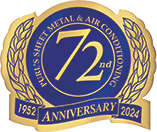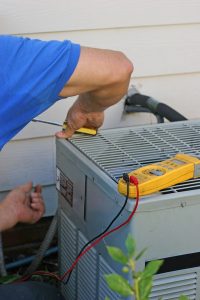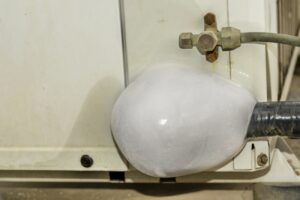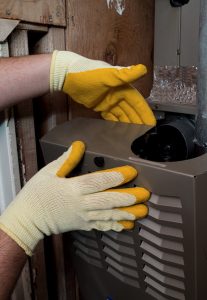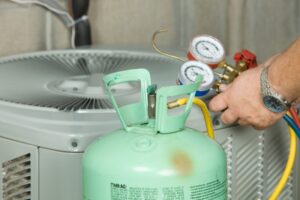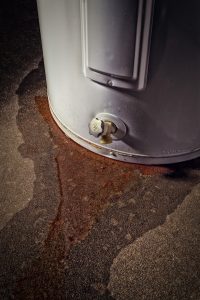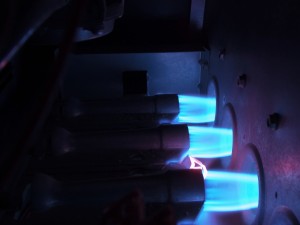As the temperatures start to climb with the beginning of spring, your air conditioning system becomes an indispensable asset in keeping your home cool and comfortable. However, the last thing you want is for it to break down on a scorching summer day. The key to ensuring your AC runs smoothly throughout the season is to schedule regular maintenance before the heat wave hits. For AC maintenance in Fresno contact Purl’s Sheet Metal & Air Conditioning.
Purl's Sheet Metal & Air Conditioning Blog: Posts Tagged ‘Fresno’
Make Sure You Schedule AC Maintenance Before the Summer Heat
Monday, April 1st, 2024What Does Ice on AC Coils Mean?
Monday, March 4th, 2024Ice on AC coils in Fresno, CA typically indicates an issue with your air conditioner that needs attention. You might think at first that ice isn’t a big deal—it just means that the AC is working hard. But ice is not part of the cooling cycle of an air conditioner. We’ll explain below why ice may appear on your air conditioning system’s evaporator coil and what to do about it and prevent it.
A Cracked Heat Exchanger Is a Major Furnace Repair Issue
Monday, February 19th, 2024Gas furnaces are reliable and powerful heating systems that can work for many years delivering warmth to a home. It’s why they’re still the most common household heating system across the country.
Some homeowners are cautious about using gas furnaces because of possible safety hazards. Burning natural gas in any appliance has some risk of uncontrolled combustion and toxic gas leaks. But as long as a furnace receives regular maintenance each year and prompt repairs when needed, the risk is minimal.
We want to focus on one specific furnace repair problem that can create serious health hazards: a cracked heat exchanger. The more you know about it, the easier it will be to prevent it.
5 Smaller Signs of a Dying Furnace
Monday, February 5th, 2024We’ve examined before the ways you can tell that you may need heating repair in Fresno, CA. As we keep moving through another cold winter in the Central Valley, you’ll want to know how to recognize all the potential indicators that your furnace is teetering on the brink of failing.
Some of these signs we haven’t shared before—they’re the silent and small warnings that may not leap out at you. Today, we’re going to delve into these sneakier signs so you’ll know sooner to call our technicians to investigate your heating system. If there’s a problem, we will find it and see if a repair will fix it or if we need to replace the whole furnace because it’s truly at the end of its service life.
What Exactly Is “Puron” and How Is It Different From Other Refrigerants?
Monday, January 22nd, 2024If you don’t have deep knowledge of the refrigerants used for air conditioning systems and heat pumps, that’s fine. This is a technical field and you want to leave any work with refrigerants to certified HVAC professionals. For example, you might think that the refrigerant in your current AC is called “freon.” But freon isn’t a general term. It’s a brand name for a specific type of refrigerant. And it probably isn’t what your AC uses. Your AC or heat pump probably uses Puron.
What’s the difference and why is it important? This is useful information to have, so we’ll go over the basics below.
How Your Water Heater Stays Rust-Free (Most of the Time)
Monday, January 8th, 2024What do you do with a rusted water heater in Fresno, CA? Most of the time, you replace it. Rust and other types of corrosion on a water heater usually signal that the system is beyond repair because of age, leaks, or neglect.
Fortunately, water heaters are designed to stay rust-free for most of their service lives—provided they receive the right attention with regular annual maintenance and prompt repairs as needed. Even though water heaters contain both metal and water—a combo to create rust—they have ways to keep that rust away.
Why Pilots Lights Have Gone “Out of Fashion”
Monday, November 27th, 2023Once upon a time, when people discussed gas furnaces, they often talked about the pilot light. This flame burned through the winter in the furnace, ready to ignite the burners as soon as gas started to flow to them. Sometimes the pilot light would go out and need relighting—and this was often Troubleshooting Step #1 on lists of what to do if a gas furnace stopped working.
But now the question people are asking isn’t “how to light a gas furnace in Fresno, CA” so much as wondering what happened to the pilot light. Some models may still use them, but not many. The pilot light has gone out of fashion, and for some good reasons.
Black Friday & HVAC
Wednesday, November 22nd, 2023Heating and Cooling 101
Thanksgiving is a time to gather and be thankful for the things that have happened during the current year. Black Friday leaves many waking up early to journey to stores to purchase Christmas gifts for family and friends. Many people also shop for deals for their home for appliances, televisions, and computers.
If you are shopping for Black Friday deals on HVAC products, we have good news and bad news. The bad news is that HVAC Black Friday deals don’t really exist. The good news is that the pricing in our industry is already applied to your purchase at any time before the end of the year and some rebates are still available until Mid-December: Carrier Cool Cash Rebate.

